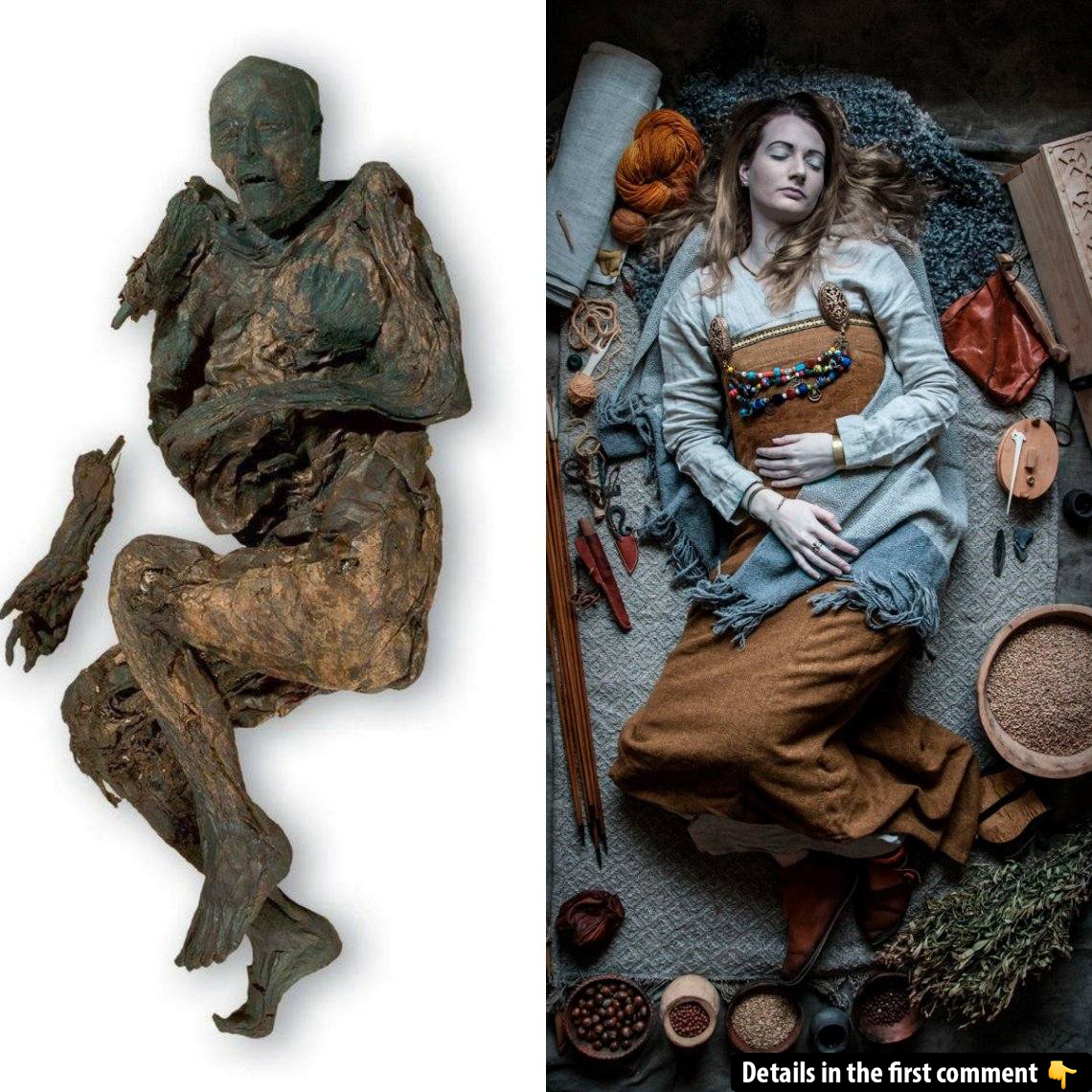The Huldremose Woman, discovered in 1879, is one of the most enigmatic finds in archaeological history. A bog body unearthed from a peat bog near the village of Ramten in Jutland, Denmark, her preserved remains offer a fascinating glimpse into the past, particularly the customs, fashion, and possible rituals of the Iron Age. Over 2,000 years old, the Huldremose Woman’s mummified body, along with her intricately preserved clothing and stomach contents, continue to captivate researchers and the public alike. As we delve into her discovery and the secrets she might hold, we uncover a story of ancient life, death, and possible sacrifice.
The Discovery of the Huldremose Woman
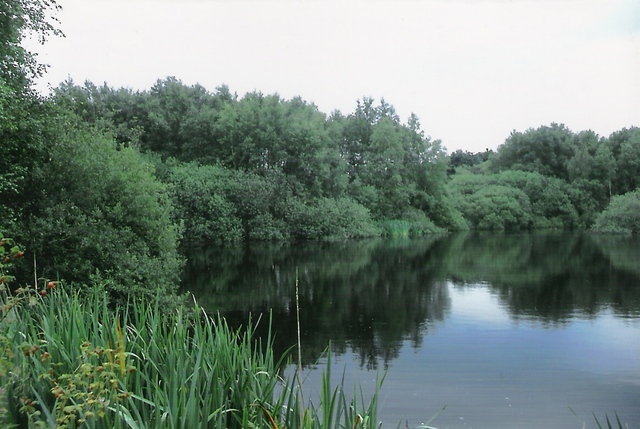
In May 1879, a worker named Niels Hansen, while digging turf at Huldremose in Jutland, struck something unusual with his shovel. Upon closer inspection, he discovered the body of a woman. Initially, Hansen assumed it was a victim of a crime, as her right hand had been severed during excavation.
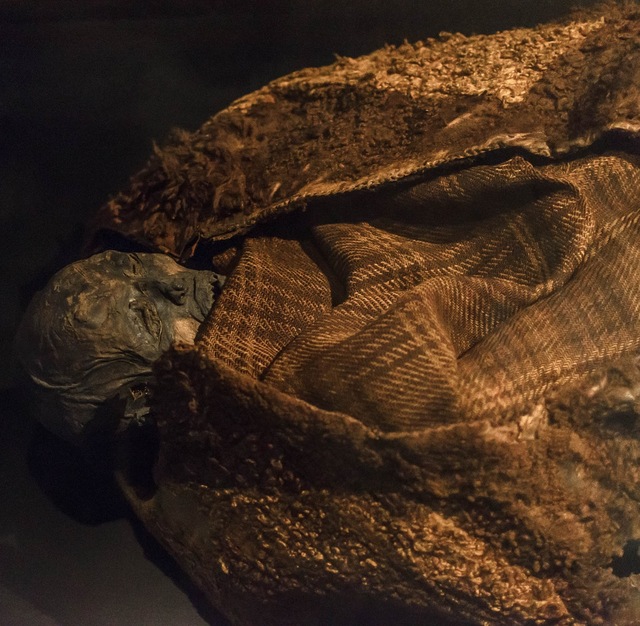
The schoolteacher from the nearby village, intrigued by the find, halted the digging, and a small team was assembled to investigate. After initial medical examination, the body was cleaned and eventually sent to the National Museum in Copenhagen for further study. Despite the rough handling, the woman’s clothing, along with the body itself, remained remarkably intact, providing invaluable insights into the past.
Video
Watch the video at the National Museum of Denmark about the Huldremose Woman and her preserved remains.
The Preservation Process: A Unique Bog Body
The conditions of the bog played a crucial role in preserving the Huldremose Woman. The oxygen-poor environment, along with the acidic nature of the peat, allowed for extraordinary preservation. Unlike typical burials, where the remains decay rapidly, the bog’s natural properties mummified her body, maintaining not only her skin and hair but also her stomach contents and clothing. The Huldremose Woman’s body serves as a remarkable example of how the peat bogs of northern Europe preserved such bodies, offering a rare window into the distant past.
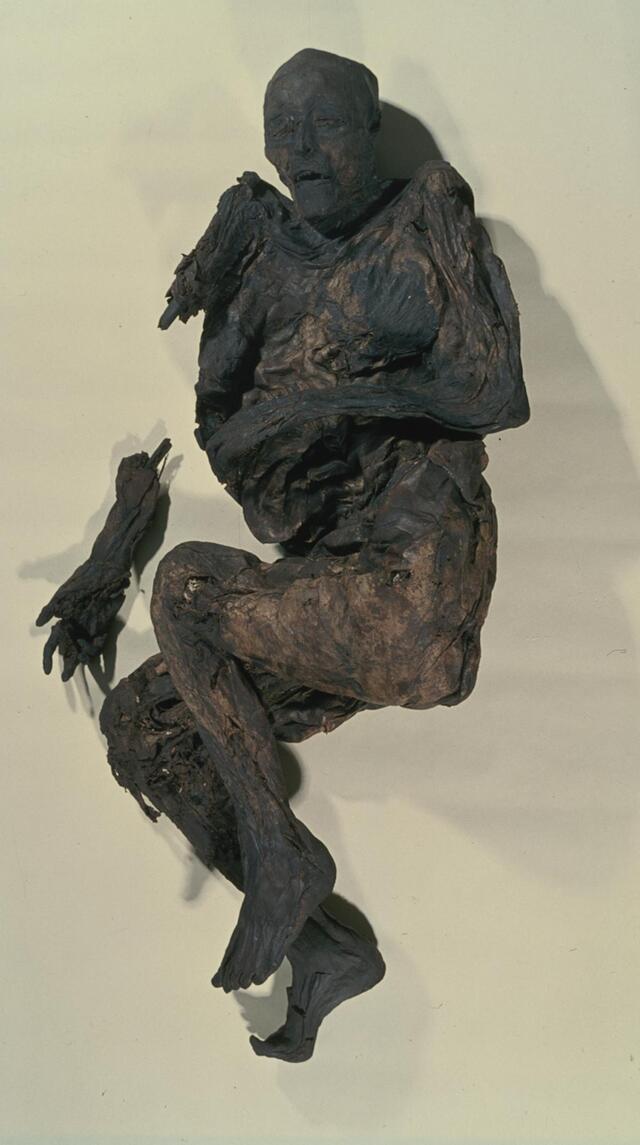
Clothing and Artifacts: A Glimpse into Iron Age Fashion

The preserved clothing of the Huldremose Woman is another testament to the superb preservation qualities of the peat bogs. She was fully dressed, wearing a checkered woolen skirt, a woolen scarf, and two capes made from sheepskin. The outer cape was a dark brown, with a collar of lighter sheepskin, while the inner cape was made from small lamb skins sewn together.
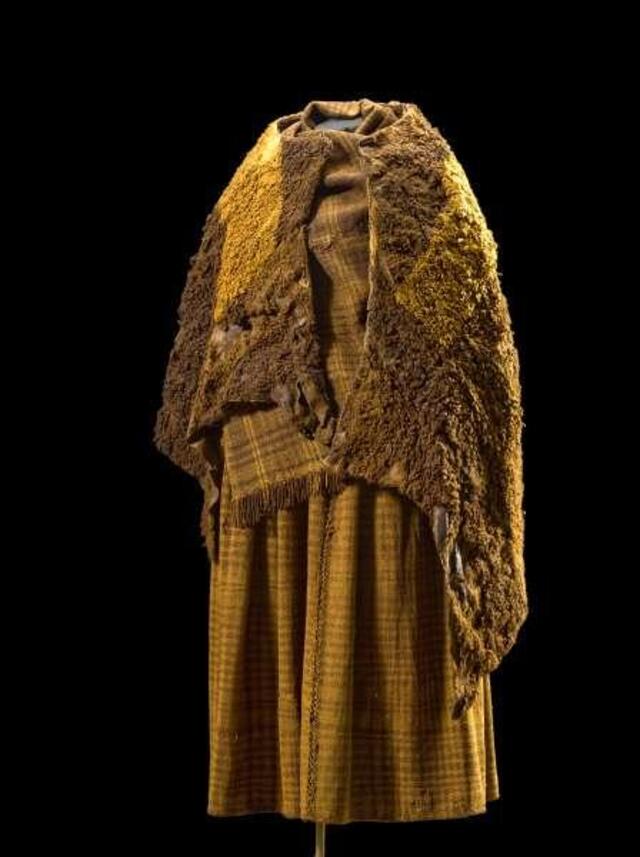
The intricate craftsmanship and details of her attire reflect the advanced textile techniques of the time, as well as the fashion trends in the Iron Age. Her woolen scarf was tied around her head and secured under her arm with a bird bone needle. This rich ensemble not only offers a look into Iron Age fashion but also provides insights into the materials that were commonly used for clothing during that period.
Stomach Contents: Insights into Her Final Meal
One of the most fascinating aspects of the Huldremose Woman’s remains is the analysis of her stomach contents. Researchers discovered that her last meal consisted of rough-ground rye, accompanied by a large amount of seeds from the weed Spergula arvensis.
Additionally, animal hairs and bits of animal tissue were found, suggesting that meat was part of her diet. This analysis gives us a rare glimpse into the diet of Iron Age people and reflects the types of food they consumed in their daily lives. The inclusion of such detailed information helps archaeologists understand the agricultural practices of the time and the types of plants and animals that were integral to survival during this period.

Violent Injury and Theories on Her Death
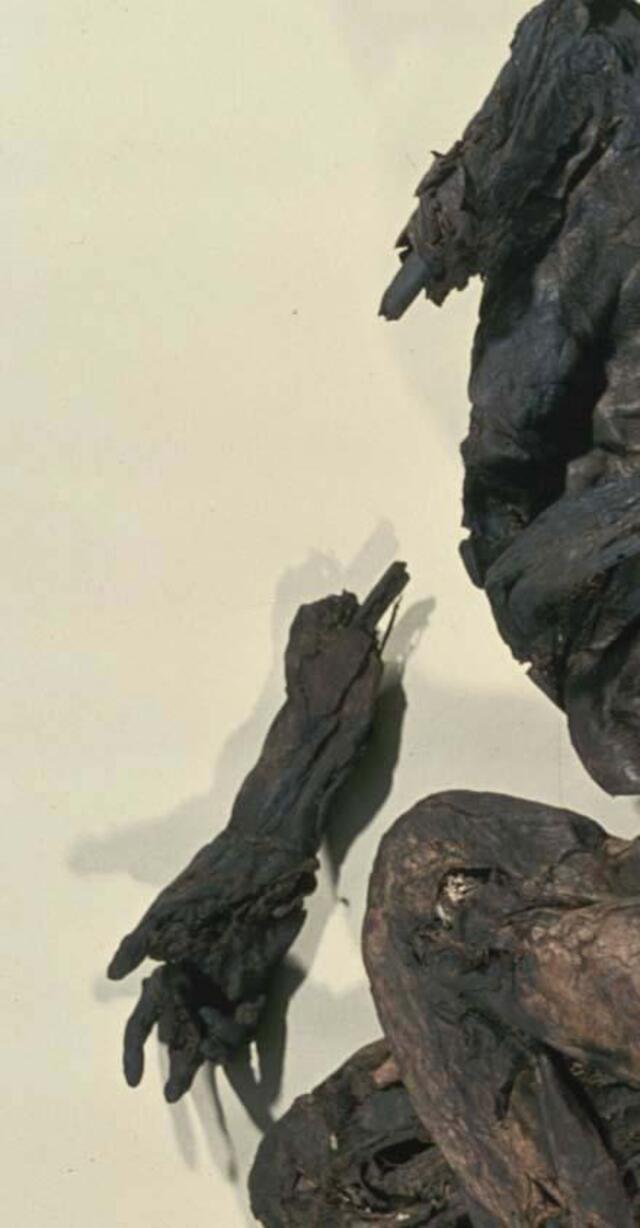
The cause of the Huldremose Woman’s death remains one of the most intriguing aspects of her story. Forensic analysis revealed a violent injury to her right arm, which appeared to be almost severed. Initially, it was thought that the woman died from blood loss caused by the injury. However, further investigations have raised doubts about this theory, suggesting that the cut may have occurred much later, possibly during the excavation of the body. While it’s unclear whether the injury was the cause of death, it’s likely that the woman met a violent end. Given the fact that she was found with her body positioned in a way that suggests a possible ritual burial, it is plausible that her death may have been the result of a sacrificial act, rather than a simple crime or accident.
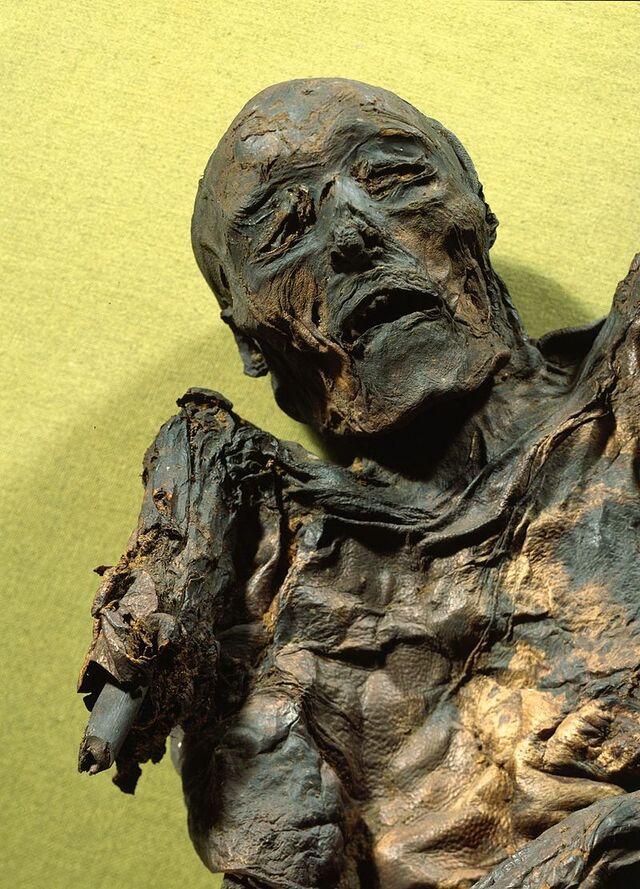
The Role of Peat Bog Sacrifice in Ancient Practices
Bogs in ancient Denmark were not only used for the extraction of peat for fuel and construction materials but also played an essential role in religious and sacrificial practices. Bogs were seen as sacred places where the boundary between the human world and the divine was blurred. It was believed that placing offerings, including tools, livestock, and even human sacrifices, in the bogs would secure good harvests and favor from the gods.
The Huldremose Woman’s burial in such a sacred space suggests that she may have been a part of this practice. Given her age (over 40 years old at the time of her death) and the nature of her clothing and belongings, it is possible that she was a ritual sacrifice, placed in the bog to appease the gods or to mark a significant event in the community.
The Huldremose Woman’s Legacy
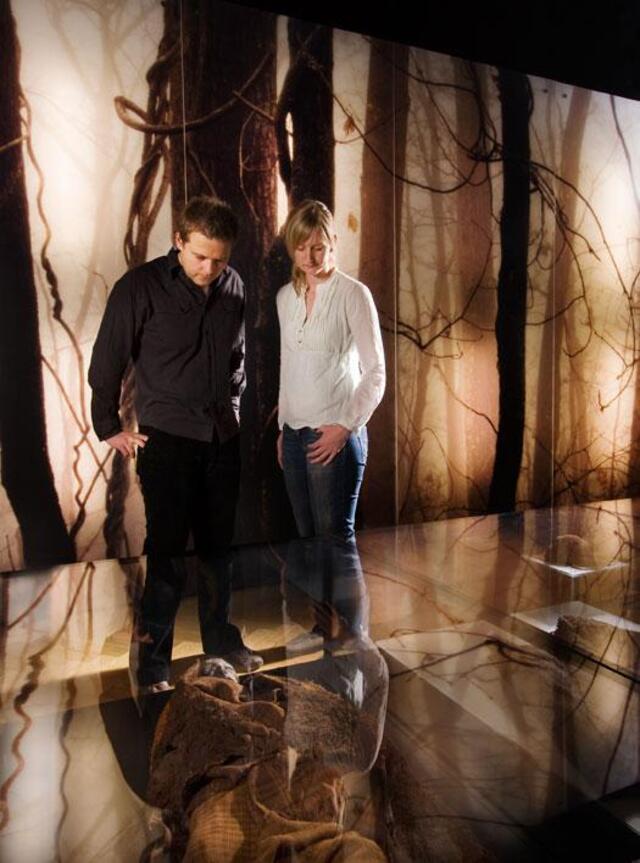
The discovery of the Huldremose Woman has had a lasting impact on the field of archaeology, providing scholars with valuable insights into the practices, fashion, and daily life of the Iron Age. Her body, along with the artifacts found with her, is one of the best-preserved examples of a bog body in Denmark. The detailed analysis of her clothing, food, and injuries continues to spark debates about her life and death. The preservation of her body also highlights the role of the bogs in Denmark, not only as a resource but as a spiritual and ritualistic space where the line between life and death, the human and the divine, was intentionally blurred.

Video
Watch the video Vikingetiden – The Vikings and Their World to explore the fascinating era of the Vikings.
Conclusion: The Huldremose Woman’s Mysterious Story Lives On
The Huldremose Woman’s discovery offers a window into a world long lost to time, yet preserved through the exceptional conditions of a peat bog. While much about her life and death remains shrouded in mystery, the evidence uncovered so far paints a vivid picture of Iron Age society, its customs, and its rituals. Her story continues to intrigue archaeologists and history enthusiasts alike, as we strive to piece together the lives of those who lived more than 2,000 years ago. The Huldremose Woman, with her remarkable preservation and mysterious death, stands as a testament to the complex and fascinating world of ancient Denmark, leaving behind an indelible mark on the study of archaeology.
